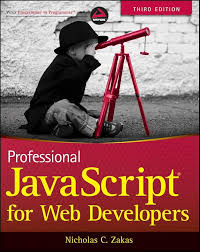White Paper Title: Professional JavaScript for Web Developers: A Comprehensive Guide
Executive Summary
This white paper provides a comprehensive overview of professional JavaScript development, covering essential concepts, best practices, and advanced techniques. We explore the core features of JavaScript, including data types, variables, control flow, functions, objects, and arrays. Additionally, we delve into modern JavaScript features such as ES6+, asynchronous programming, and DOM manipulation. By understanding these fundamental aspects, web developers can build robust, efficient, and maintainable JavaScript applications.
Introduction
- The role of JavaScript in web development
- The evolution of JavaScript
- Overview of modern JavaScript features
Part I: JavaScript Fundamentals
1. Data Types and Variables
- Primitive data types (numbers, strings, booleans, null, undefined, Symbol)
- Objects and arrays
- Variable declaration and scoping
2. Control Flow
- Conditional statements (if, else, else if)
- Loops (for, while, do-while)
- Switch statements
3. Functions
- Function declaration and expression
- Function scope
- Arguments and parameters
- Return values
- Arrow functions
4. Objects
- Object properties and methods
- Object creation and manipulation
- Prototypes and inheritance
5. Arrays
- Array creation and access
- Array methods (push, pop, shift, unshift, splice, slice, etc.)
- Array iteration (for...in, for...of)
Part II: Modern JavaScript
1. ES6+ Features
- Classes and modules
- Template literals
- Destructuring assignment
- Spread operator
- Promises
- Async/await
2. Asynchronous Programming
- Callbacks
- Promises
- Async/await
- Event-driven programming
3. DOM Manipulation
- Selecting elements
- Modifying attributes and styles
- Creating and removing elements
- Event handling
Part III: Best Practices and Advanced Topics
1. Code Quality and Maintainability
- Code formatting and style guides
- Comments and documentation
- Modularization and organization
- Testing and debugging
2. Performance Optimization
- Minimizing DOM manipulation
- Efficient algorithms and data structures
- Caching and lazy loading
- Asynchronous operations
3. Security Considerations
- Cross-Site Scripting (XSS) prevention
- Cross-Site Request Forgery (CSRF) protection
- Input validation and sanitization
- Secure coding practices
References
- Flanagan, D. (2011). JavaScript: The Definitive Guide. O'Reilly Media.
- Crockford, D. (2008). JavaScript: The Good Parts. O'Reilly Media.
- MDN Web Docs: https://developer.mozilla.org/en-US/
- [Add more relevant references as needed]
Note: This outline provides a comprehensive framework for the white paper. You can expand on specific sections, add additional case studies, or incorporate other relevant theories and concepts. Contact ias-research.com for details.



